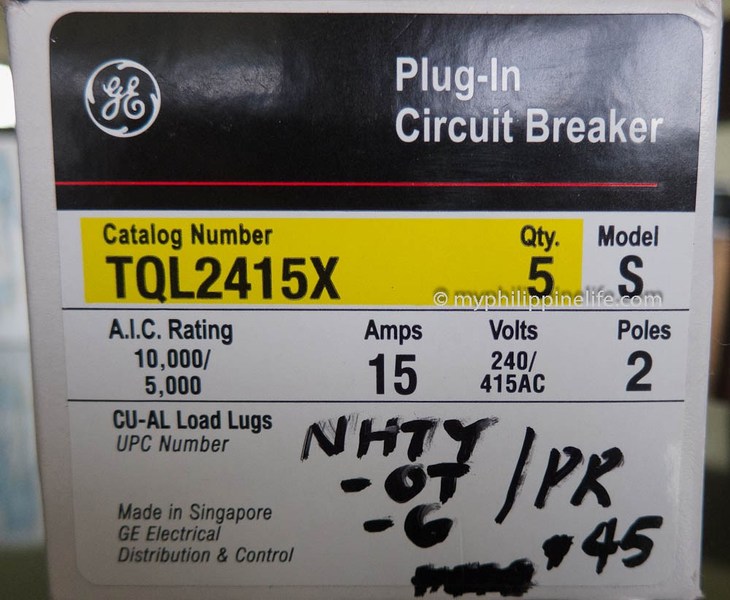mbrooke
Batteries Included
- Location
- United States
- Occupation
- Technician
The 30A GFCI breakers use AWG 10 wire to the sockets. The 60A GFCI breakers use AWG 6 to the subpanel. It is the main panel. The electrician and even some engineers didn't suggest 20 space Siemens load center last year as we were not even sure it could work, so settled for the 12 space (6 breakers only). I mean, what if it would nuisance trip on the fridge, air conditioning units, others. Fortunately it has zero nuisance tripping, unlike the GFCI receptacles which can trip on the fridge twice a day for example.
Technically this is a code violation- 15amp sockets can not be on a circuit larger then 20amps. Technically- but if its custom throughout the Philippines it is what it is.
US breakers can trip when overcurrent reaches 20X. What brands or categories are 20X and which is 10X? And did you mean in the B type MCBs. It can trip just 5x overcurrent? Then it is better. For main breaker (or backup disconnect) in residential, do you think B type MCBs is better? or would it nuisance trip on the fridge, washing machine, water pump, etc.? What is the minimum magnetic pickup for residential?
Most older single pole breakers had a very high magnetic trip value well exceeding 20x with some having no magnetic trip at all. In the late 80s US manufactures started lowering the magnetic trip value on single pole breakers sold in the US. Today the pickup usually starts around 10x for single poles, but double poles are often around 20x.
Regarding the IEC Type B is around 3-5X, C is 5-10X and D is 10-20X.
https://library.e.abb.com/public/114371fcc8e0456096db42d614bead67/2CDC400002D0201_view.pdf
Having a breaker trip magnetically during a fault reduces the incident energy at the short circuit point and in the IEC its used to acheive disconnection time requirements.
At the same time you need to consider appliance inrush. In Europe type B MCBs do well on general use 230 volt socket circuits; but for things like motors, ballasts, transformers and other large appliances type C is used. You could also do D if you really wanted to make sure the food in your fridge doesn't go bad.
In the end B, C or D is not relevant- as long as a short circuit at the furthest point in the fixed wiring is capable of tripping the breaker magnetically you are fine in the eyes of the IEC.
Under the NEC however disconnection times are not mandated, mostly because at 120 volts L-G the need is less so in that a person will only encounter 60 volts on the frame of an appliance during a short circuit vs 115 volts.
During a short circuit the voltage on average divides evenly between the hot wire and ground wire, with the fault point being the midway mark.












